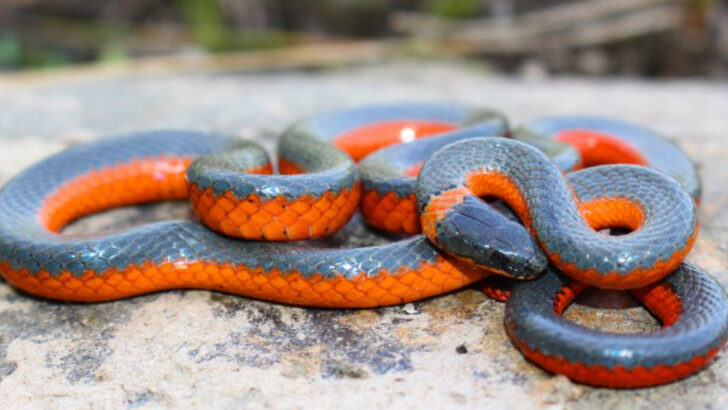Not all snakes are scary. Some are drop-dead gorgeous. Shiny scales. Electric colors. Patterns so perfect, they look painted on. The U.S. is home to some stunning serpents—and a few might be slithering closer than you think. While some of these beauties spark panic at first glance, they’re actually harmless. In fact, six of them are safer than they look, no matter how fierce their stare or flashy their stripes. Whether you’re a snake fan or a little snake-shy, this list just might change how you see them. Because danger isn’t always in the design—and beauty isn’t always in the eye of the beholder.
Eastern Coral Snake

With its iconic red, yellow, and black banding, the Eastern Coral Snake is a sight to behold. Often confused with the non-venomous Scarlet Kingsnake, this species is actually venomous but rarely aggressive towards humans. It prefers to hide under logs or in leaf litter, emerging mainly in the early morning or late evening. A fun fact about this snake is its unique neurological venom, rarely used on humans. Despite its fierce appearance, it’s a reclusive creature, avoiding confrontation. Its vibrant colors are nature’s way of warning predators to steer clear.
Garter Snake
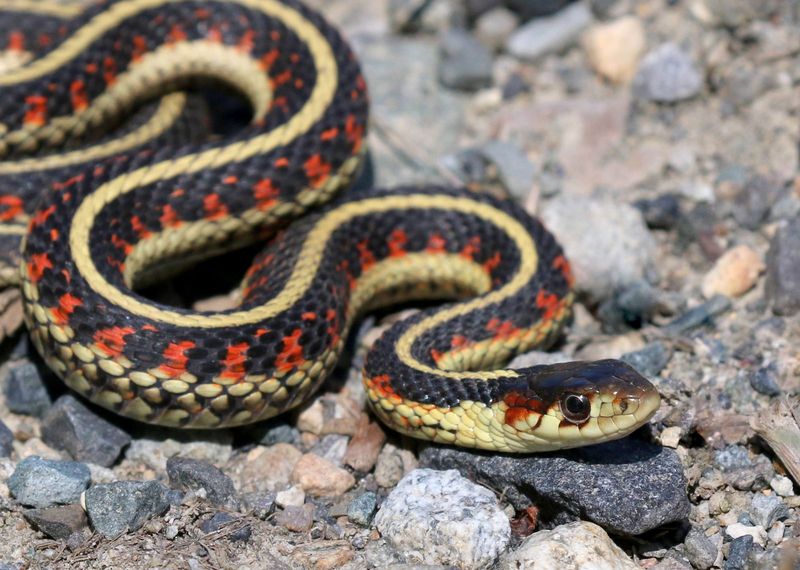
Garter Snakes, often found in gardens and near water bodies, are known for their adaptability across North America. Their slender bodies, adorned with longitudinal stripes, make them easily recognizable. Despite their abundance, they play a crucial role in controlling insect and rodent populations. Interestingly, Garter Snakes can emit a musky scent when threatened, a natural defense mechanism. These snakes are generally harmless to humans and are often seen basking in the sun. Their presence in gardens is beneficial, making them a gardener’s ally in pest control.
California Kingsnake
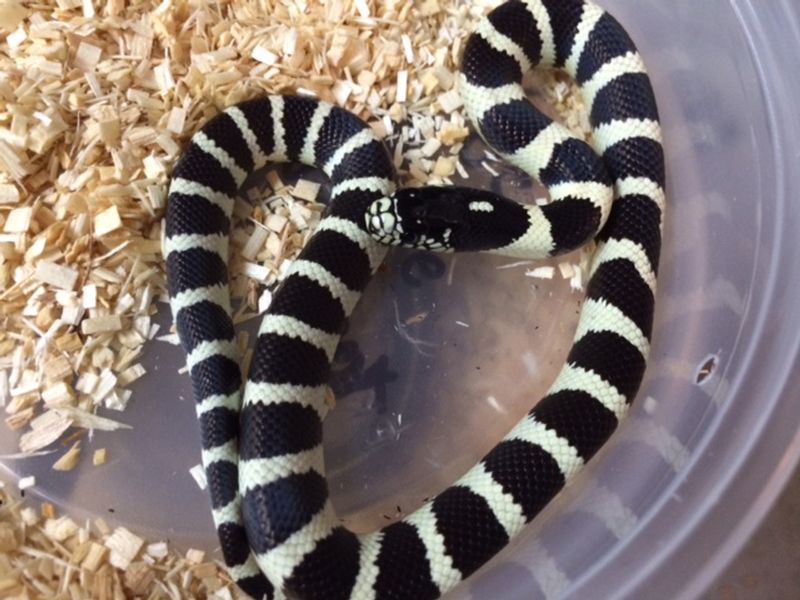
The California Kingsnake is renowned for its striking black and white or brown and cream banding. Found throughout the western United States, this snake is a master predator, even preying on other snakes, including venomous species. They possess a powerful constriction ability, which they use to subdue their prey. Despite this predatory nature, they are non-venomous and pose no threat to humans. A fascinating trait is their immunity to rattlesnake venom, allowing them to hunt these potentially dangerous adversaries. This adaptability makes them a captivating species.
Milk Snake
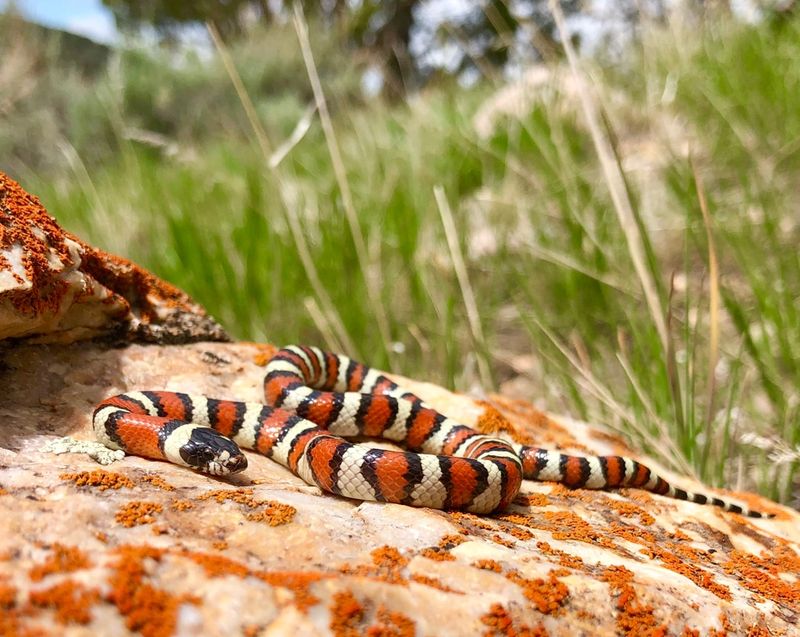
Milk Snakes are known for their beautiful tri-colored banding, often leading to confusion with the venomous Coral Snake. However, Milk Snakes are non-venomous and completely harmless to humans. They thrive in a variety of habitats, from woodlands to grasslands, displaying remarkable adaptability. An interesting fact is their name originated from myths of them milking cows, which is entirely false. These snakes are secretive by nature, often found under logs or rocks. Their striking appearance serves as a mimicry strategy, deterring predators while fascinating onlookers.
Corn Snake

Corn Snakes are cherished for their vibrant orange and red coloration, making them popular in the pet trade. Found across southeastern and central United States, they inhabit overgrown fields and forest edges. Despite their striking appearance, they are non-venomous and pose no threat to humans. Their diet consists mainly of rodents, which they constrict before consuming. These snakes have a calm demeanor and are often used in educational programs to teach about reptiles. Their name derives from the pattern on their belly, resembling maize kernels.
Eastern Indigo Snake
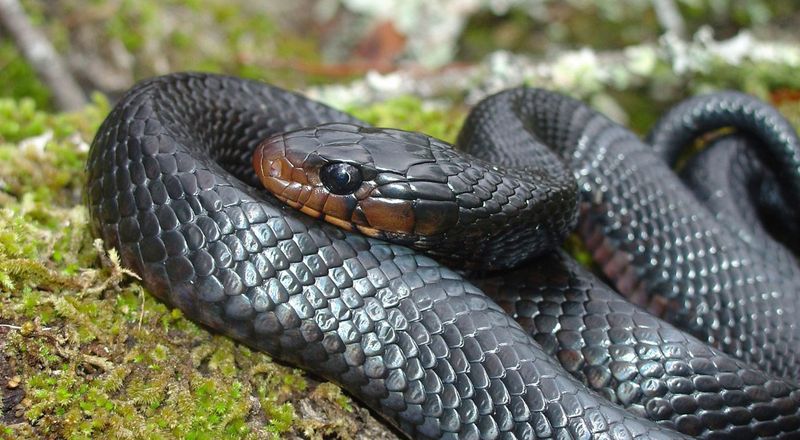
The Eastern Indigo Snake, with its glossy blue-black scales, is the longest native snake in the United States. Its impressive length and striking coloration make it a remarkable sight. Although it shares habitat with the venomous rattlesnakes, it poses no threat to humans. Instead, it preys on other snakes, including venomous ones, due to its immunity to their venom. This non-venomous snake is known for its docile nature, making it a favorite among snake enthusiasts. Unfortunately, habitat loss has impacted its numbers, placing it on the threatened species list.
Ring-necked Snake
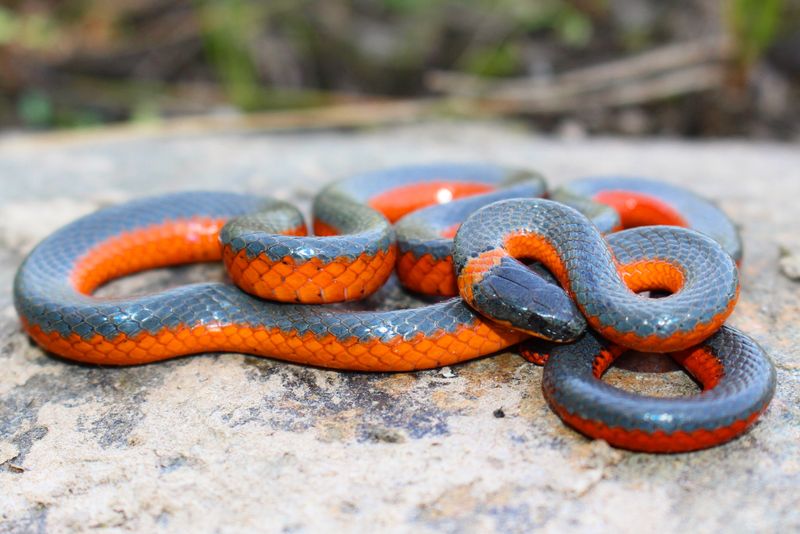
With a striking orange ring around its neck, the Ring-necked Snake is a small yet fascinating species. Found in a variety of habitats, from woodlands to grasslands, they are rarely seen due to their secretive nature. These snakes are non-venomous and pose no threat to humans. When threatened, they exhibit a unique behavior by curling their tails, revealing a bright underside to deter predators. Their diet mainly consists of small amphibians and invertebrates. Despite their elusive behavior, they play a vital role in maintaining ecological balance.
Western Ribbon Snake
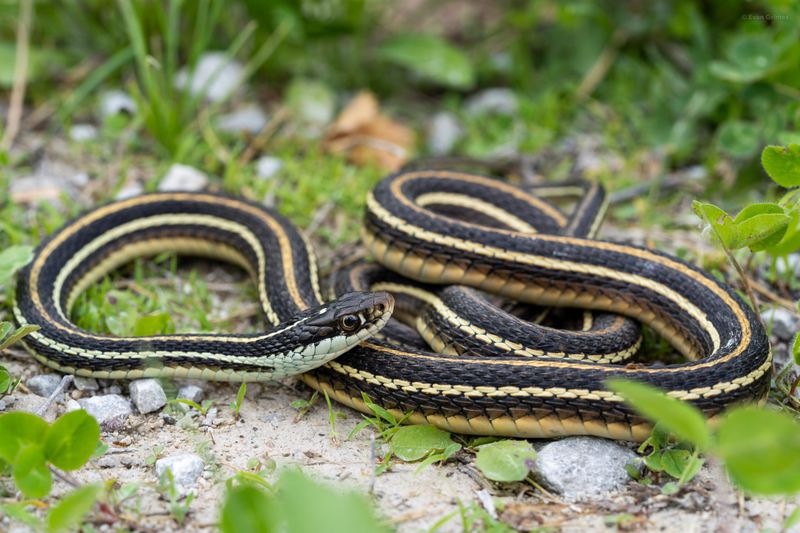
Western Ribbon Snakes are known for their slender bodies and striking longitudinal stripes. Found near water bodies, they are excellent swimmers and often hunt for small fish and amphibians. Despite their sleek appearance, they are non-venomous and harmless to humans. An interesting fact is their agility on both land and water, making them adept hunters. These snakes are often spotted basking on rocks or branches near lakes and streams. Their presence is a good indicator of a healthy ecosystem, as they help control amphibian populations.
Scarlet Snake
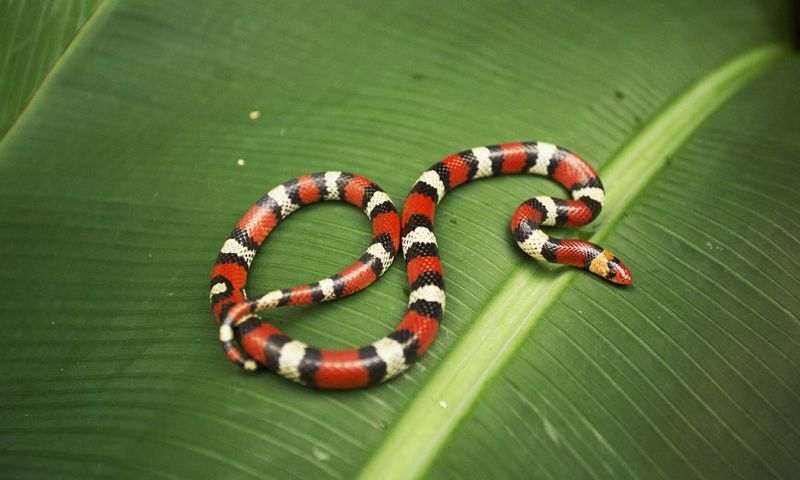
Scarlet Snakes, with their vivid red, black, and white bands, are often mistaken for the venomous Coral Snake. However, they’re non-venomous and harmless. These nocturnal creatures prefer sandy soils where they can burrow and hunt for lizards and small rodents. A curious fact is their ability to mimic the appearance of more dangerous species, a clever survival strategy. Despite their reclusive nature, their striking appearance and gentle demeanor make them a fascinating subject for snake enthusiasts and photographers alike.
Smooth Green Snake
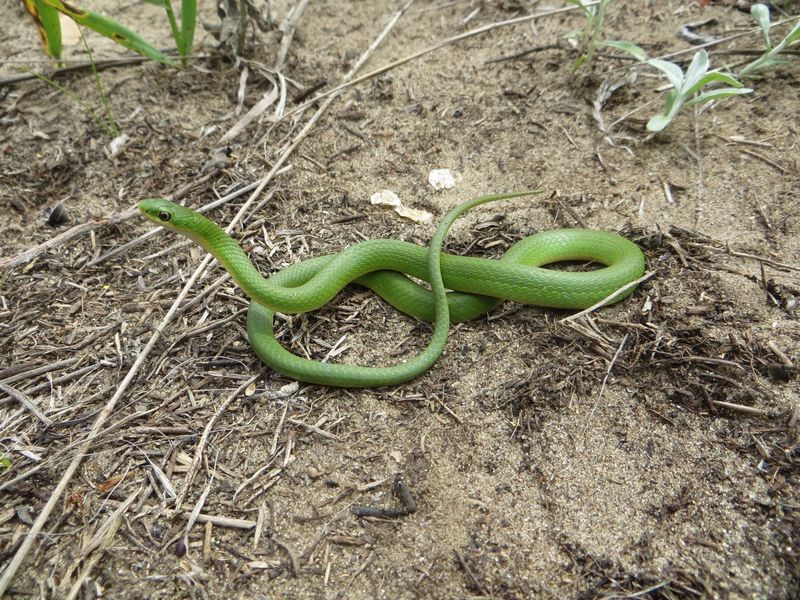
Smooth Green Snakes, with their bright green scales, are truly a marvel of nature’s camouflage. Found in moist, grassy areas, they blend seamlessly with their surroundings. These snakes are non-venomous and pose no threat to humans, feeding primarily on insects and spiders. A notable trait is their sensitivity to environmental changes, making them indicators of ecosystem health. They are often spotted during warm months, basking in the sun. Their gentle nature and vibrant color make them a favorite among those who appreciate natural beauty.
Copperhead

The Copperhead, with its unique copper-colored head, is one of the most recognized venomous snakes in the United States. Despite their venomous nature, bites are rarely fatal to humans and often occur when the snake is inadvertently stepped on. They thrive in wooded and rocky regions, relying on their camouflage to ambush prey. Interestingly, their venom is being studied for potential medical applications. While caution is advised around them, they are not aggressive and typically avoid human contact. Their presence underscores the importance of understanding wildlife behavior.
Red-bellied Snake
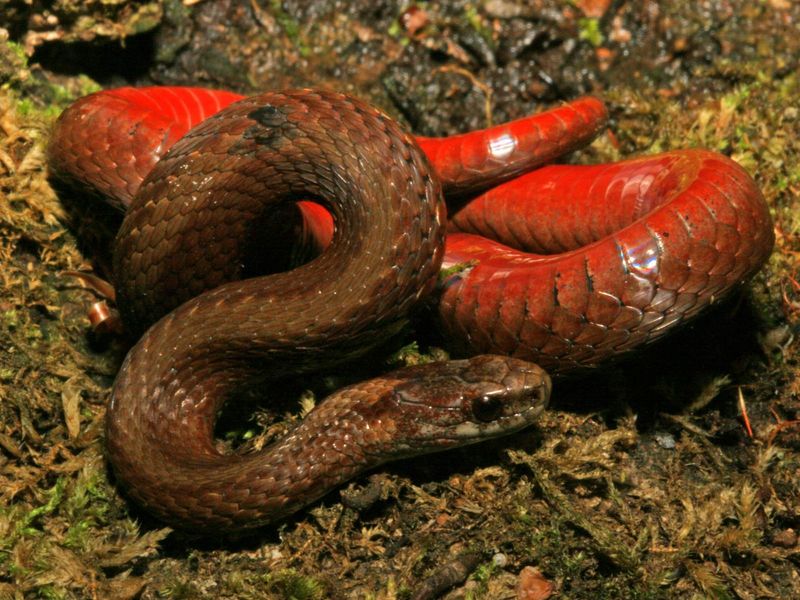
Red-bellied Snakes are small, non-venomous serpents known for their striking red underbelly. Found throughout the eastern United States, they inhabit moist forests and are rarely aggressive, making them harmless to humans. Their diet consists of slugs, insects, and small invertebrates. When threatened, they display their bright underside as a warning to potential predators. Despite their small size, they play a significant role in controlling pest populations. Their vivid coloration and gentle nature make them a charming find for nature enthusiasts exploring forested areas.
Eastern Rat Snake
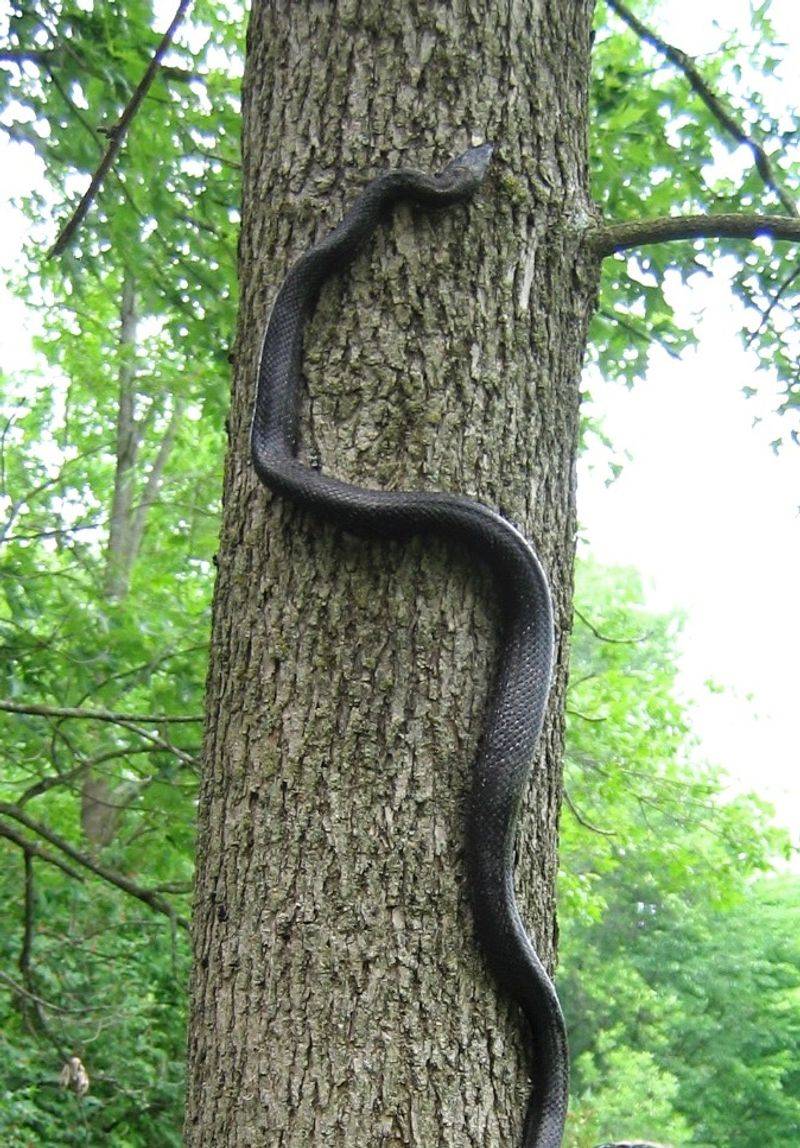
Eastern Rat Snakes, with their glossy black scales, are often found in wooded areas and are climbers by nature. Known for their length and strength, they are non-venomous and pose no threat to humans. Their primary diet consists of rodents, which they effectively control, making them beneficial to have around farms and gardens. When threatened, they may freeze or vibrate their tails to mimic rattlesnakes as a defensive tactic. Their adaptability and usefulness in pest control highlight their ecological importance and fascinating behavior.
Black Racer
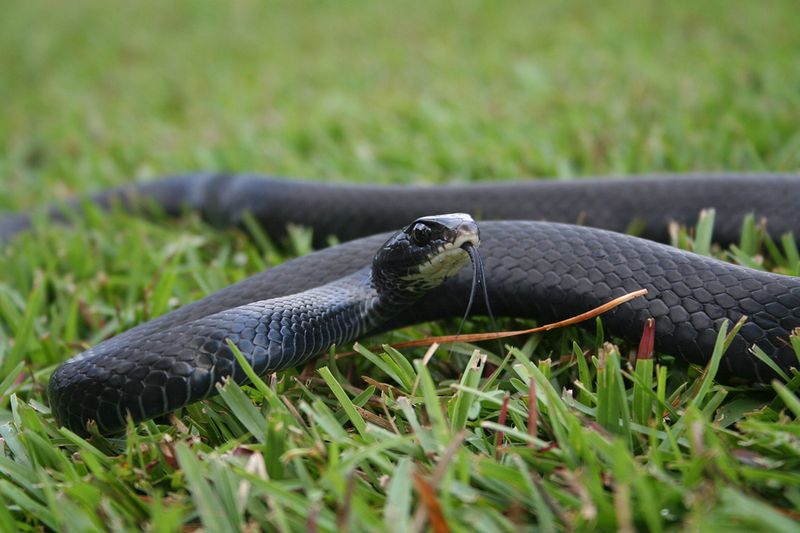
Black Racers are known for their speed and agility, often seen darting through meadows and open fields. These non-venomous snakes are harmless to humans and play a crucial role in controlling pest populations. Their diet includes insects, rodents, and small amphibians. An interesting trait is their defensive behavior; instead of biting, they often flee or vibrate their tails in leaves to mimic the sound of a rattlesnake. Despite their intimidating name, Black Racers are skittish and prefer to avoid confrontation, making them a dynamic part of their ecosystem.
Rough Green Snake

Rough Green Snakes are arboreal specialists, often found in trees and shrubs where their green scales provide perfect camouflage. These non-venomous snakes are gentle and pose no threat to humans, feeding primarily on insects. Their bright coloration not only aids in concealment but also makes them a delightful sight for those lucky enough to spot one. An interesting behavior is their ability to remain motionless for long periods, avoiding detection by predators and prey alike. Their presence is a testament to the rich biodiversity of their habitats.
Western Hognose Snake

The Western Hognose Snake, with its distinctive upturned snout, is a master of theatrics. When threatened, it performs dramatic displays by flattening its neck and playing dead. Found in sandy areas and grasslands, this non-venomous snake is harmless to humans. Its diet consists mainly of toads and small rodents. A quirky fact is its ability to mimic cobras by flattening its neck, although it’s completely harmless. Their playful behavior and unique appearance make them a favorite among herpetologists and snake enthusiasts.
Eastern Diamondback Rattlesnake
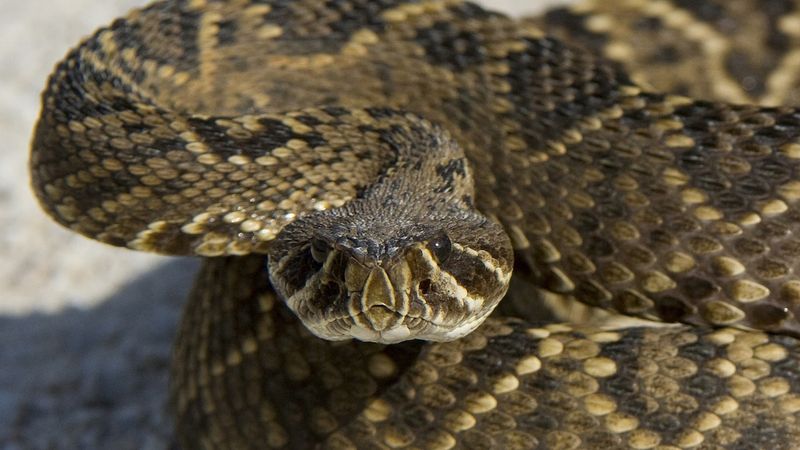
The Eastern Diamondback Rattlesnake, with its iconic diamond pattern, is the largest venomous snake in the United States. Found primarily in the southeastern states, it prefers dry, pine flatwoods and coastal scrub habitats. Although its venom is potent, bites are rare and usually the result of being provoked. Interestingly, its rattle is used as a warning signal, allowing potential threats to retreat. This apex predator plays a vital role in controlling small mammal populations. Caution is advised when encountering this snake, but it is not inherently aggressive.
Pine Snake
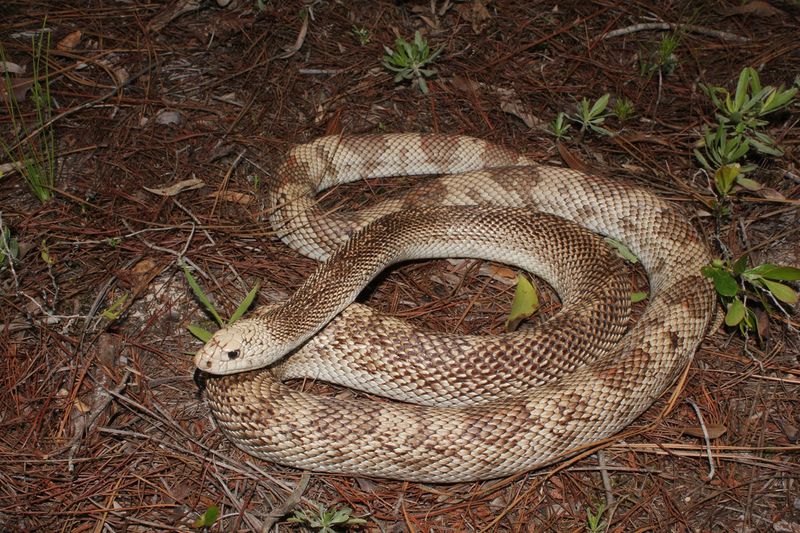
Pine Snakes, with their robust bodies and patterned scales, are expert burrowers found in the southeastern United States. These non-venomous snakes are known for their ability to dig and create extensive burrows. Their diet primarily consists of small mammals and birds. When threatened, they exhibit a unique defense mechanism by hissing loudly to deter predators. Despite their intimidating sounds, they are harmless to humans. Their natural habitat includes sandy pine forests and fields, where they play a significant role in controlling rodent populations.
Timber Rattlesnake
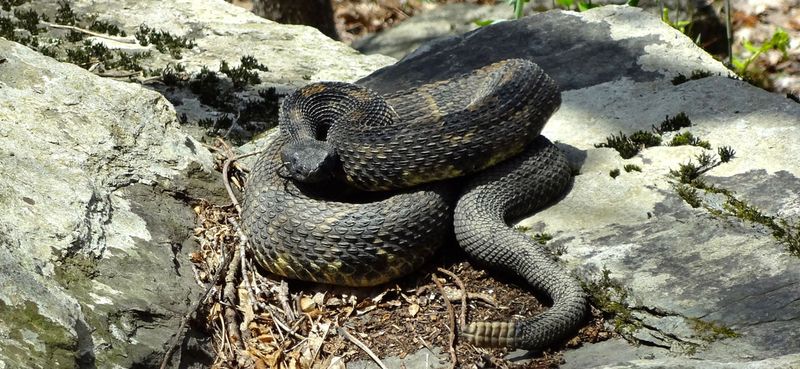
Timber Rattlesnakes, with their velvety pattern and characteristic rattle, are found in deciduous forests across the eastern United States. Although venomous, they are generally shy, avoiding human interaction. Their preferred habitats include rocky outcrops and wooded hillsides. A fascinating fact is their seasonal movements, migrating to den sites in the fall. Their venom is potent, designed to immobilize prey, primarily small mammals. While caution is advised, their role in controlling rodent populations is crucial. Their presence is indicative of a healthy, balanced ecosystem.
Bullsnake
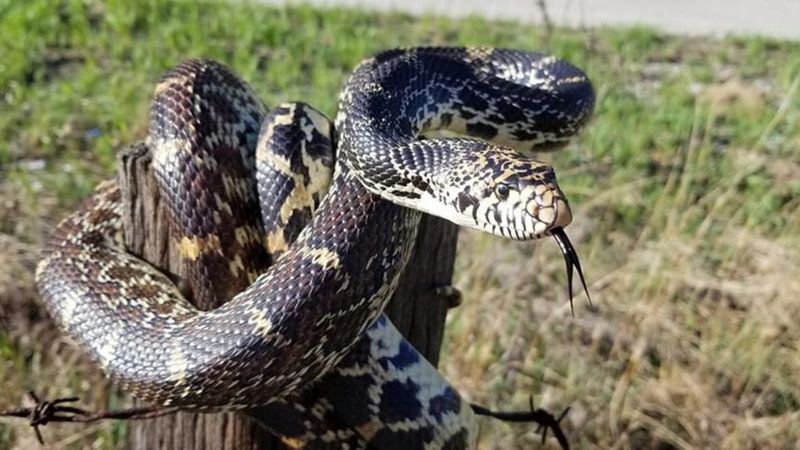
Did you know that the Bullsnake is often mistaken for a rattlesnake due to its similar appearance and defensive behavior? This non-venomous reptile is one of the largest snakes in North America, reaching lengths of up to 8 feet.
The Bullsnake is a master of intimidation, hissing loudly and flattening its head when threatened. Despite its fearsome display, it is harmless to humans and plays a key role in controlling rodent populations.
Its ability to mimic rattlesnakes keeps predators at bay, showcasing nature’s incredible adaptations. The Bullsnake’s impressive presence is matched only by its ecological importance.

